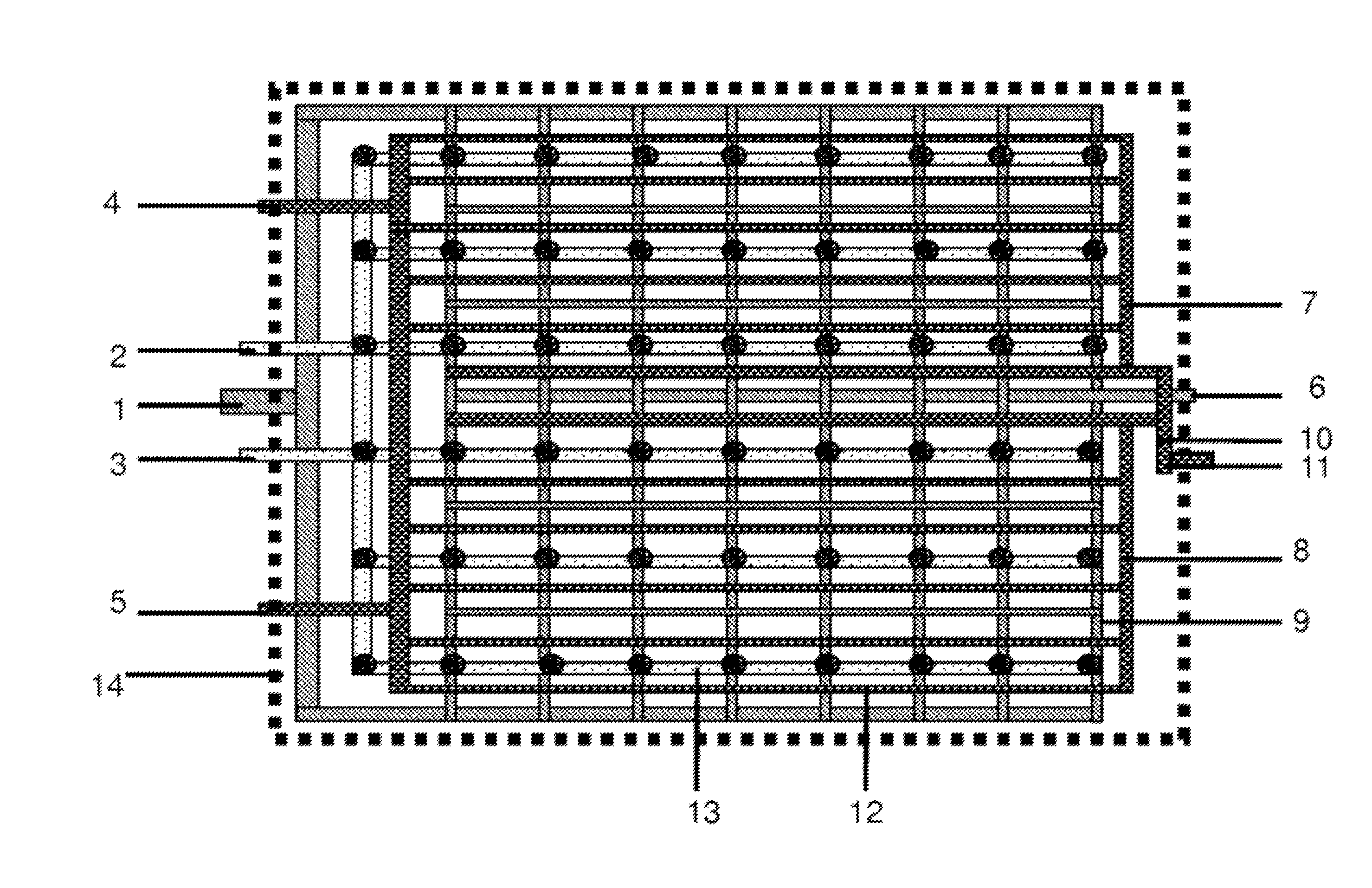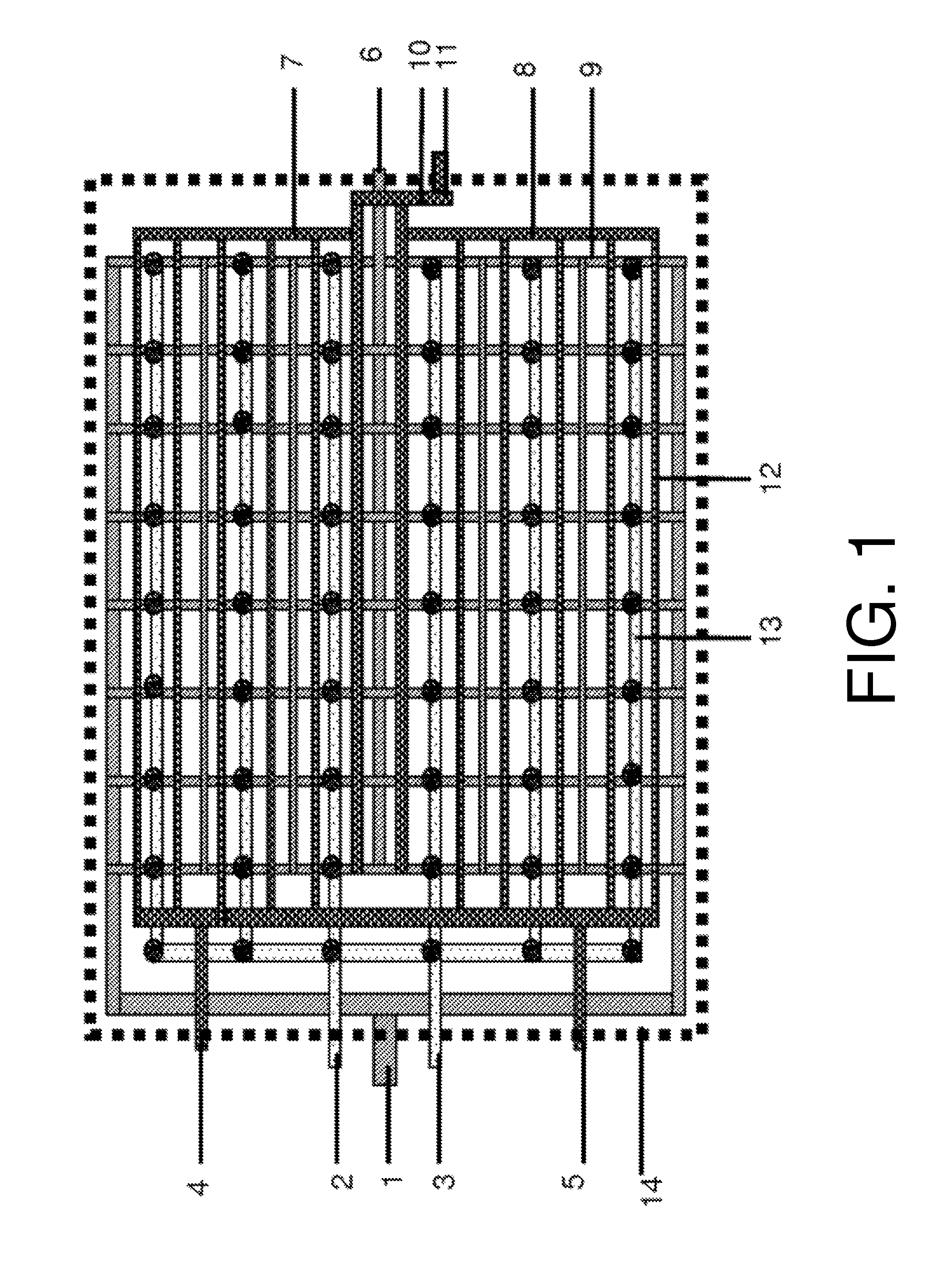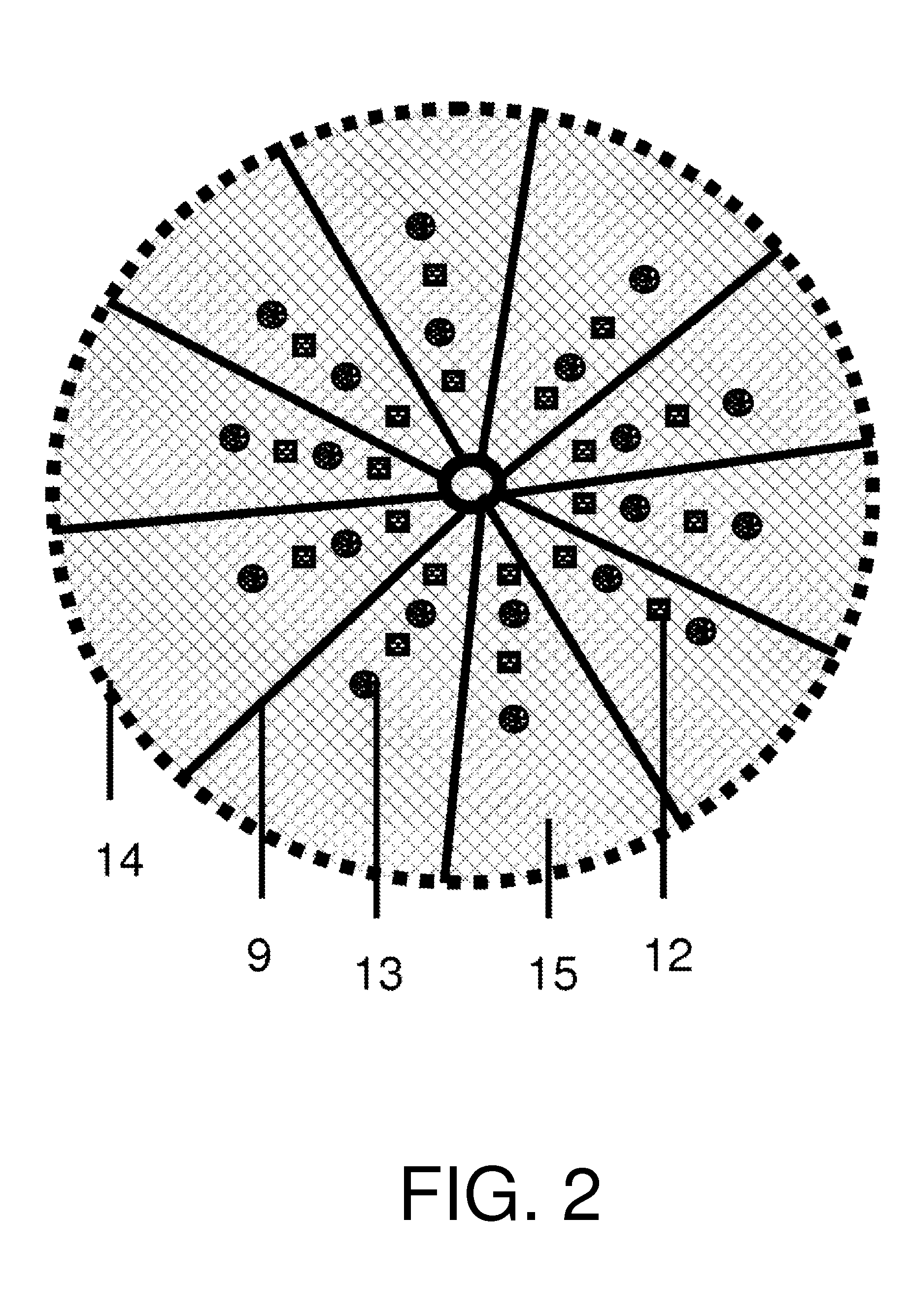Hepatic lobule-like bioreactor
a hepatic lobule-like and bioreactor technology, applied in the field of bionic liver tissue engineering and hepatic lobule-like bioreactors, can solve the problems of complex tissue structure and physiological functions of the liver, inability to construct a fully functional or transplantable tissue engineered liver in vitro, and inability to achieve the effects of fully functional or transplantable tissue engineered liver, excellent mass transfer properties, and comprehensive functions
- Summary
- Abstract
- Description
- Claims
- Application Information
AI Technical Summary
Benefits of technology
Problems solved by technology
Method used
Image
Examples
Embodiment Construction
[0027]Referring to FIGS. 1 to 3, a hepatic lobule-like bioreactor includes a closed-housing 14, with a nanofiber scaffold 15 enclosed in the housing 14. An intrahepatic fibrous vascular network 9, a bile capillary network 12, upper hepatic bile ducts 7, lower hepatic bile ducts 8, a common bile duct 10, and collagen fibrous microchannels for hepatocytes 13 are distributed throughout the nanofiber scaffold 15, and the collagen fibrous microchannels for hepatocytes 13 are surrounded by the bile capillary network 12. Among them, the upper hepatic bile ducts 7 are connected to the lower hepatic bile ducts 8 via the common bile duct 10. Bile capillaries in the bile capillary network 12 are provided with two or more inlet ports for biliary epithelial cells. The collagen fibrous microchannels 13 for hepatocytes are provided with two inlet ports 2, 3 for hepatocytes. In the present invention, the bioreactor may include three or more inlet ports for biliary epithelial cells and three or more...
PUM
| Property | Measurement | Unit |
|---|---|---|
| porosity | aaaaa | aaaaa |
| diameter | aaaaa | aaaaa |
| diameter | aaaaa | aaaaa |
Abstract
Description
Claims
Application Information
 Login to View More
Login to View More - R&D
- Intellectual Property
- Life Sciences
- Materials
- Tech Scout
- Unparalleled Data Quality
- Higher Quality Content
- 60% Fewer Hallucinations
Browse by: Latest US Patents, China's latest patents, Technical Efficacy Thesaurus, Application Domain, Technology Topic, Popular Technical Reports.
© 2025 PatSnap. All rights reserved.Legal|Privacy policy|Modern Slavery Act Transparency Statement|Sitemap|About US| Contact US: help@patsnap.com



